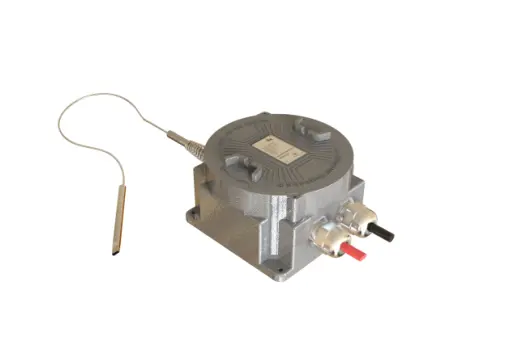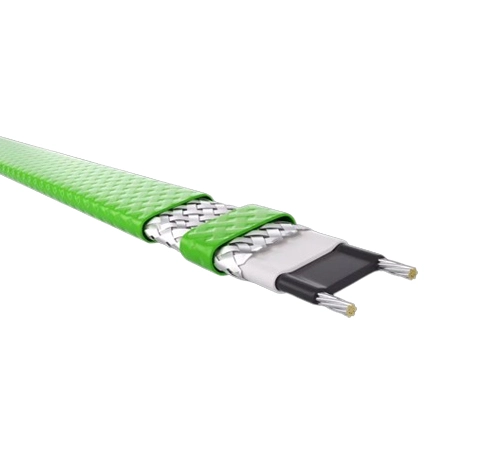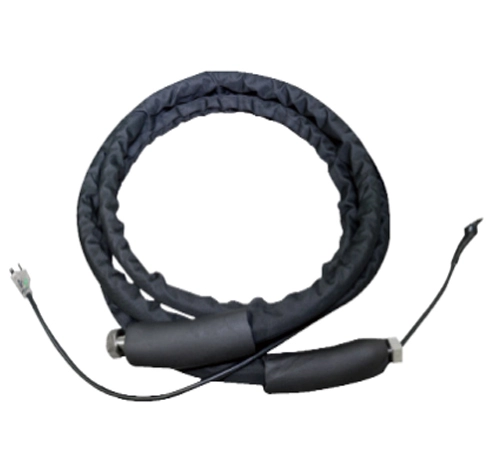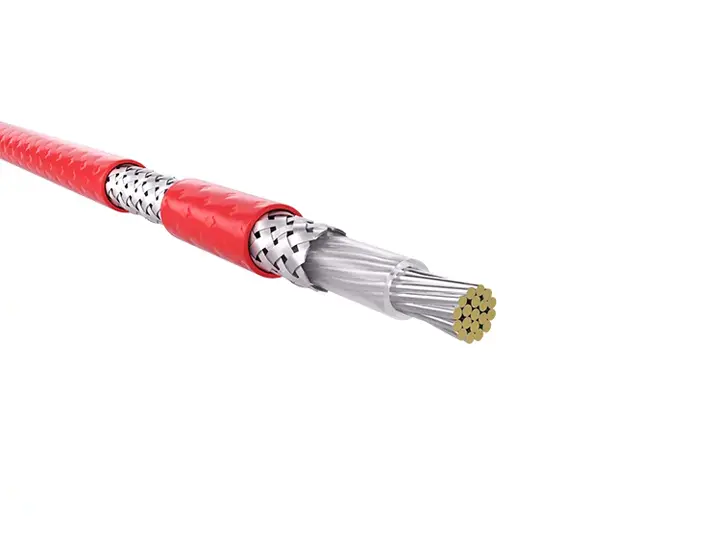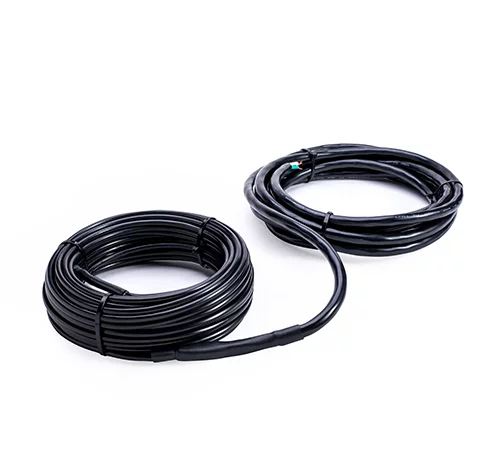Constant wattage heat trace cables maintain a consistent power output after being powered on, regardless of changes in external environments, insulation materials, or the materials being heated. The output or cessation of power is usually controlled by a temperature sensor. Constant wattage heat trace cables can be divided into parallel and series types.
Parallel Constant Wattage Heat Trace Cable
The parallel constant wattage heat trace cable consists of two (or three) parallel insulated copper stranded wires as the power bus, with a PTC characteristic heating wire wound on a framework. Every heating segment length is alternately connected to the bus, forming a continuous parallel resistor, with a usable length of about 10-800 meters.
Structure
The heating wire of parallel constant wattage heat trace cable is connected in parallel, and it heats the pipes through the heating of the resistance wire during operation.
Principle
Two parallel nickel-copper stranded wires are covered in a fluoride insulation layer, serving as the power bus. Nickel-chromium alloy heating wires are wound outside the inner insulation layer, and are welded at fixed distances to form a continuous parallel resistor. When the power copper bus is powered, each parallel resistor heats up, forming a continuous heating tape that can be cut to any size.
The parallel type constant wattage heat trace cable is mainly used in industries such as petroleum and chemical. It can start quickly but cannot be crossed or overlapped in use and requires a temperature control system. The length cannot be shorter than one heating unit, and the longest loop can reach 180m.
Series Constant Wattage Heat Trace Cable
The series constant wattage heat trace cable consists of three parallel insulated copper stranded wires of the same cross-sectional area and a fixed length, serving as the power bus and heating core wire. By reliably short-circuiting one end and connecting the other to a 380V (or designed voltage) power source, a star-shaped load is formed. According to Joule's law: Q=0.24IRT, the electrical energy converts into thermal energy, and the star-shaped load continuously releases heat, forming a continuous and evenly heated tape. Depending on the actual need, the three phases (or single phase) of the series constant wattage heat trace cable can be separated (split type) or integrated. This heating cable usually spans 500-2500 meters.
Structure
Its heating wire is connected in series, heating the pipes through the heating of the resistance wire during operation.
Principle
The series constant wattage heat trace cable consists of insulated copper stranded wires as the power bus and heating core wire. Due to the inherent resistance of the core wire, Joule heat is generated when current passes through. The heat generated is proportional to the square of the current, the resistance of the core wire, and the time of passage. Thus, the series constant wattage heat trace cable continuously releases heat over time, forming a continuous and evenly heated tape. The heating current and resistance are constant across the entire tape, maintaining a stable output power unaffected by ambient or pipe temperatures.
Similarly, the series type constant wattage heat trace cable is primarily used in industries like petroleum and chemical, and has the advantage of quick startup. However, it cannot be crossed or overlapped during use and requires a temperature control system. A single loop can reach up to about 1800m, making it suitable for long-distance pipelines. However, the length of the series type constant wattage heat trace cable must be designed based on actual usage needs and pre-manufactured at the factory. Arbitrary cutting or extending is strictly prohibited.
Advantages of Constant Wattage Heat Trace Cable
No large startup current, constant power;
Long service life, small startup current, good memory performance, low annual attenuation rate;
Uniform temperature rise;
High temperature resistance;
Energy-saving and low operating costs;
Can be used for long distances, with long single loop lengths, requiring fewer loops for long-distance heating, leading to low total investment.
It should be noted that constant wattage heat trace cables should not be crossed or overlapped in use, as this can cause burning. Therefore, it is difficult to lay them in places where crossing and overlapping are unavoidable and where insulation cannot be set up. In addition, they cannot be arbitrarily cut or extended. Although parallel constant wattage heat trace cables can be cut, it must be done between heating units; series constant wattage heat trace cables cannot be cut at all.
Wuhu Jiahong New Materials Co., Ltd. is a leading heating cable manufacturer in China, specializing in the development, manufacturing, and sales of heating cables, heating pads, thermostats, and various energy-saving thermal control products and systems. We are dedicated to providing integrated, one-stop thermal control system solutions for residential, commercial, and industrial sectors, covering freeze prevention, insulation, heating, snow melting, de-icing, anti-condensation, and intelligent control. Welcome to inquire and purchase, and we look forward to cooperating with you!


